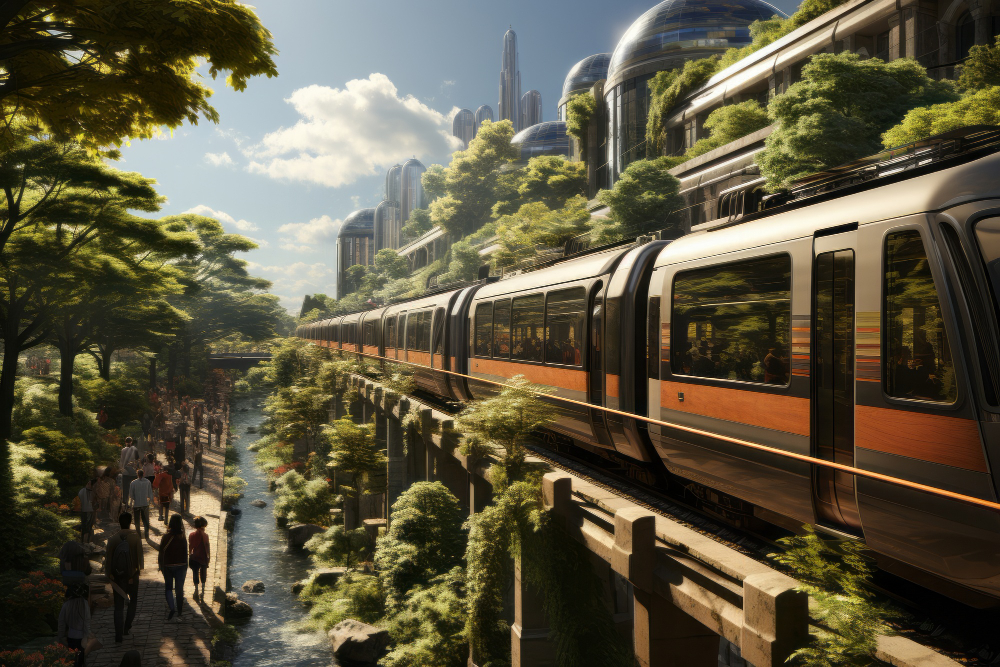Public Transport 2.0: Embracing Innovation for a Better Passenger Experience

Public transport is the backbone of urban mobility, shaping how millions of people move through cities daily. From buses and trams to trains and subways, these systems connect communities, reduce congestion, and support sustainability. Yet, as urban populations grow, transit operators must modernize their services to meet rising passenger expectations.
We are now entering the era of Public Transport 2.0—a transformation driven by AI, IoT, and Big Data, making transit smarter, more efficient, and passenger-focused. This article explores key innovations revolutionizing public transport and how they are reshaping the commuter experience.
Despite its essential role, public transport faces persistent issues:
Unreliable Schedules: Delays and unpredictable service deter commuters.
Overcrowding: Inadequate capacity management leads to poor passenger experiences.
Outdated Customer Service: Lack of real-time communication frustrates users.
Aging Infrastructure: Maintaining and upgrading systems is costly and complex.
Environmental Impact: Traditional transport systems contribute to urban pollution.
These challenges underscore the urgent need for a technology-driven transformation to create a more efficient and sustainable transit experience.
Public transport is becoming smarter and more responsive through real-time data integration:
IoT Sensors & GPS: Installed in vehicles and stations to track location, occupancy, and delays.
AI-Enhanced Monitoring: Detects operational inefficiencies and predicts service disruptions.
Passenger Notifications: Mobile apps provide live updates on arrival times and crowd levels.
For commuters, this means accurate travel planning, reduced uncertainty, and a more reliable transit experience.
Advanced analytics are transforming transit operations by anticipating challenges before they arise:
Dynamic Scheduling: AI-powered demand forecasting optimizes routes and fleet deployment.
Predictive Maintenance: Sensors track wear-and-tear, scheduling repairs before failures occur.
Cost Efficiency: Reduces unplanned downtime and extends vehicle lifespan.
By shifting from reactive to proactive operations, transit agencies ensure higher reliability and efficiency in service delivery.
Today’s passengers expect a frictionless travel experience, which smart technologies facilitate:
Contactless & Mobile Ticketing: Smartphones, bank cards, and wearables enable seamless payments.
Unified Transit Systems: Integrated networks allow a single ticket for buses, trains, and metros.
Real-Time Trip Adjustments: AI-powered navigation suggests alternate routes during delays.
These innovations eliminate bottlenecks, reduce waiting times, and personalize commuting to individual needs.
Public transport is pivotal in reducing urban carbon footprints. Sustainable initiatives include:
Electric & Hybrid Fleets: Cities are adopting zero-emission buses and trains.
Renewable Energy Integration: Solar and wind power are increasingly used in transit stations.
Smart Energy Management: AI optimizes fuel consumption, minimizing waste.
Sustainable public transport supports cleaner air, lower costs, and compliance with global climate goals.
Ensuring safety is paramount in public transport, and new technologies are enhancing security measures:
AI-Powered Surveillance: Detects suspicious activities and alerts authorities in real time.
Driver Behavior Monitoring: In-cab AI improves driving habits, reducing accidents.
Automated Emergency Response: AI-assisted protocols improve crisis management.
These advancements create a safer, more secure commuting environment, fostering greater public trust.
As transit agencies integrate new technologies, they require flexible and cost-effective expertise. Virtual Delivery Centers (VDCs) provide scalable, on-demand solutions for:
How VDCs Support Public Transport Innovation:
On-Demand Talent: Experts in AI, IoT, and data analytics enhance transit systems without permanent hiring.
Technology Implementation: Seamless adoption of real-time tracking, predictive analytics, and smart ticketing solutions.
Cost Optimization: Scalable models reduce expenses while ensuring high-quality innovation.
Sustainability Expertise: Guidance on integrating renewable energy and green technologies.
Security Enhancement: AI-driven safety implementations for both passengers and operators.
With VDCs, transit agencies can rapidly deploy cutting-edge solutions, optimize operations, and future-proof public transport.
Several cities worldwide have successfully adopted Public Transport 2.0:
Singapore: Uses AI-driven predictive demand models to prevent overcrowding and reduce wait times.
London: Revolutionized mobility with a contactless payment system across all transit modes.
Copenhagen: Leading in sustainability with a fully electric bus fleet and green energy stations.
These examples showcase how technology improves efficiency, reliability, and passenger satisfaction.
The future of public transport extends beyond technological upgrades—it’s about redefining urban mobility to create efficient, sustainable, and passenger-centric experiences.
Public Transport 2.0 is not just an idea—it’s happening now. Cities embracing these innovations will see the rewards: better service, happier commuters, and smarter urban infrastructure. The journey towards a fully connected, data-driven, and sustainable transport system has begun, and the possibilities for the future are limitless.
Are you ready to revolutionize public transport? Discover how Virtual Delivery Centers can drive smart, sustainable, and efficient transit solutions today.

For modern telecom enterprises, delivering exceptional QoS is no longer optional—it’s a brand differentiator and a strategic lever for growth. Static provisioning models won’t cut it in a world of hyper-dynamic data usage.